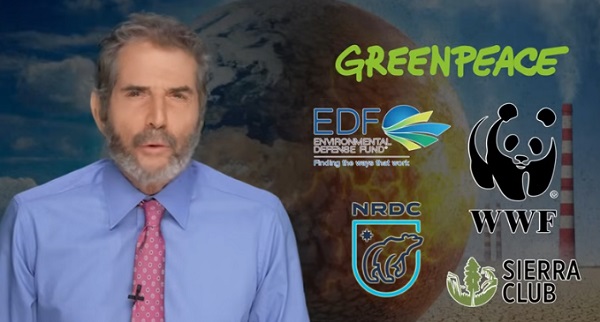Opinion
The Age of Disruption
Welcome to ” The Age of Disruption”
I am writing a series of articles that will discuss the world of disruptive technology, and the human impact both positive and negative. I will be attempting to put a Red Deer and Central Alberta spin on the technology implications. I will also welcome your questions and comments.
The drive to produce this series of articles is based on my own experience of being downsized in the last recession(2009/10) and then as a result of changes in the economy ending up being structurally under-employed ( living in a place where appropriate jobs are no longer available) But a place where my wife has a good, stable, well paying job. Moving crashes her career for the sake of my career, staying in Red Deer means I don’t work at my highest paying possibility… unless I can find a way to take geography and the traditional workplace environment out of the equasion.
About Me – The Author
I had a very traditional career, in accounting at a high (pre-professional designation) level working in industry; but I came into that career by a somewhat untraditional route, an MBA taken online. To be honest, its not even a true MBA, Simon Fraser University, one of the top universities in Canada, packaged up a portion of the core MBA courses into something called a Graduate Diploma in Business Administration, so basically nobody knows what this is. It sounds like an undergraduate diploma, except that it is graduate (MBA) level work, its like 1/2 an MBA or an MBA without a specialization. In short it is something that is not transferable to anything else unless I want to move to Vancouver and finish it off and SFU is the only school that will give me advance standing for these courses. With a wife, family, and mortgage, simply impossible, SFU only offers their MBA in an on campus mode, I have researched dozens of other MBA programs but can’t get more than one or two courses to transfer so would basically be repeating, and spending big $$ to repeat the coursework.
In terms of Red Deer and central Alberta, we don’t have the large private companies that employ lots of accountants at all different levels, Basically there are large numbers of Bookkeepers, some do very advanced work, but generally the pay rate is hourly, and $25 hour is upper end, then there are the Professional Accountants, some work as Controllers and CFO’s at private companies but most in Central Alberta work for CPA Firms doing Public Practice Tax and Audit work. A funny thing about accounting, many people go from Public Practice Accounting to Private Industry but almost nobody goes from Private Industry to Public Practice, my biggest problems in this area is that I have never worked public practice, and I have no desire to do so.
While I don’t want to work public practice Audit & Tax, I would like to work advisory and consulting services and with the number of industries that I have worked in I believe that I would have something to offer. With out a professional accounting designation in Red Deer, those options are limited. Now nearing 50, I also have no desire to enter the CPA Professional Designation process, which most likely would have me competing with 20 year olds, at an entry level pay grade, doing public practice accounting work. Two years ago I talked to the CPA organization and due to the dates of many of my courses, they advised that I really would be starting out back at square one. I guess time to take a look at a new career path.
In the interim I have been a contingent worker, working several short-term gigs in my profession and running a couple of small sideline businesses. I have also started to educate myself on using the WWW, Cloud Technologies, and Social Media to earn an online living. I am amazed at what you can learn on line or very affordably with Groupon’s. Yes technology is even disrupting traditional learning as well, there are many great courses you can take on line for free, and even better ones that you can take at steeply discounted prices with Groupon coupons.
I have spent three years part-time building out my new technology knowledge base only to find out too often that working in technology is a younger person’s game. Age Discrimination is a very real problem in many technology firms, and also in many non-tech companies. Not saying that Red Deer has many tech firms, they do have some very good ones, but the roles that they have are limited mostly to coding and development that would require a whole new degree. I am still earning the majority of my income from a somewhat more traditional “JOB”, but the goal for 2017 is to earn 10% of my income from online sources and to become a referenced source of knowledge on technology economic and social disruption.
My motto is ” Work Any Place, Any Time, on Any Device” using technology.
If you or your company has a disruptive technology please write to me and we will discuss its impact. I would love to feature it in my posts.
I hope you enjoy my posts, I will try and write here weekly.
Les Brown is a writer, commentator on technology, a Futurologist, Writes for the “Age of Disruption”, Social Media Manager & Business Consultant.
John Stossel
The Green Industrial Complex: Power, Panic, and Profits

From StosselTV
Media portray environmental groups as the underdog. In reality, they’re the big guys, and today they’re rolling in money.
What’s worse is how they use it.
First, they peddle scares. They say polar bears are disappearing. They aren’t. They claim bees are dying off. Also not true. They spread these lies to get MORE money.
“Hysteria generates donations,” explains science writer Jon Entine. “The oxygen for these organizations is money donated by people who think they’re doing good.” It’s why Big E now receives billions in donations.
It’s bad enough that they lie to us to get paid. But they also use their money to block progress. One group boasts, “In the past year our legal team has stopped thousands of miles of fossil fuel pipelines and dozens of large power plants.”
They even oppose solar and wind farms. “It’s a shame,” argues Cato Institute’s Travis Fischer, “When I think about what America could be … we could be so much more prosperous than we are.”
Our video covers more ways Big E blocks progress.
After 40+ years of reporting, I now understand the importance of limited government and personal freedom.
——————————————
Libertarian journalist John Stossel created Stossel TV to explain liberty and free markets to young people.
Prior to Stossel TV he hosted a show on Fox Business and co-anchored ABC’s primetime newsmagazine show, 20/20. Stossel’s economic programs have been adapted into teaching kits by a non-profit organization, “Stossel in the Classroom.”
High school teachers in American public schools now use the videos to help educate their students on economics and economic freedom. They are seen by more than 12 million students every year.
Stossel has received 19 Emmy Awards and has been honored five times for excellence in consumer reporting by the National Press Club.
Other honors include the George Polk Award for Outstanding Local Reporting and the George Foster Peabody Award.
———
To make sure you receive the weekly video from Stossel TV, sign up here: https://johnstossel.activehosted.com/f/1
—— —
Fraser Institute
Democracy waning in Canada due to federal policies

From the Fraser Institute
By Lydia Miljan
In How Democracies Die, Harvard political scientists Steven Levitsky and Daniel Ziblatt argue that while some democracies collapse due to external threats, many more self-destruct from within. Democratic backsliding often occurs not through dramatic coups but through the gradual erosion of institutions by elected leaders—presidents or prime ministers—who subvert the very system that brought them to power. Sometimes this process is swift, as in Germany in 1933, but more often it unfolds slowly and almost imperceptibly.
The book was written during Donald Trump’s first presidential term, when the authors expressed concern about his disregard for democratic norms. Drawing on Juan Linz’s 1978 work The Breakdown of Democratic Regimes, Levitsky and Ziblatt identified several warning signs of democratic decline in Trump’s leadership: rejection of democratic rules, denial of the legitimacy of political opponents, tolerance or encouragement of violence, and a willingness to restrict dissent including criticism from the media.
While Trump is an easy target for such critiques, Levitsky and Ziblatt’s broader thesis is that no democracy is immune to these threats. Could Canada be at risk of democratic decline? In light of developments over the past decade, perhaps.
Consider, for example, the state of free speech and government criticism. The previous Liberal government under Justin Trudeau was notably effective at cultivating a favourable media environment. Following the 2015 election, the media enjoyed a prolonged honeymoon period, often focusing on the prime minister’s image and “sunny ways.” After the 2019 election, which resulted in a minority government, the strategy shifted toward direct financial support. Citing pandemic-related revenue losses, the government introduced “temporary” subsidies for media organizations. These programs have since become permanent and costly, with $325 million allocated for 2024/25. During the 2025 election campaign, Mark Carney pledged to increase this by an additional $150 million.
Beyond the sheer scale of these subsidies, there’s growing concern that legacy media outlets—now financially dependent on government support—may struggle to maintain objectivity, particularly during national elections. This dependency risks undermining the media’s role as a watchdog of democracy.
Second, on April 27, 2023, the Trudeau government passed Bill C-11, an update to the Broadcasting Act that extends CRTC regulation to digital content. While individual social media users and podcasters are technically exempt, the law allows the CRTC to regulate platforms that host content from traditional broadcasters and streaming services—raising concerns about indirect censorship. This move further restricted freedom of speech in Canada.
Third, the government’s invocation of the Emergencies Act to end the Freedom Convoy protest in Ottawa was ruled unconstitutional by Federal Court Justice Richard Mosley who found that the government had not met the legal threshold for such extraordinary powers. The same day of the ruling the government announced it would appeal the 200-page decision, doubling down on its justification for invoking the Act.
In addition to these concerns, federal government program spending has grown significantly—from 12.8 per cent of GDP in 2014/15 to a projected 16.2 per cent in 2023/24—indicating that the government is consuming an increasing share of the country’s resources.
Finally, Bill C-5, the One Canadian Economy Act, which became law on June 26, grants the federal cabinet—and effectively the prime minister—the power to override existing laws and regulations for projects deemed in the “national interest.” The bill’s vague language leaves the definition of “national interest” open to broad interpretation, giving the executive branch unprecedented authority to micromanage major projects.
Individually, these developments may appear justifiable or benign. Taken together, they suggest a troubling pattern—a gradual erosion of democratic norms and institutions in Canada.
-

 Business1 day ago
Business1 day agoCarney Liberals quietly award Pfizer, Moderna nearly $400 million for new COVID shot contracts
-

 Frontier Centre for Public Policy2 days ago
Frontier Centre for Public Policy2 days agoCanada’s New Border Bill Spies On You, Not The Bad Guys
-

 Addictions1 day ago
Addictions1 day agoWhy B.C.’s new witnessed dosing guidelines are built to fail
-

 Business1 day ago
Business1 day agoMark Carney’s Fiscal Fantasy Will Bankrupt Canada
-

 Energy2 days ago
Energy2 days agoCNN’s Shock Climate Polling Data Reinforces Trump’s Energy Agenda
-

 Red Deer1 day ago
Red Deer1 day agoWesterner Days Attraction pass and New Experiences!
-

 Opinion1 day ago
Opinion1 day agoCharity Campaigns vs. Charity Donations
-

 COVID-191 day ago
COVID-191 day agoTrump DOJ dismisses charges against doctor who issued fake COVID passports






